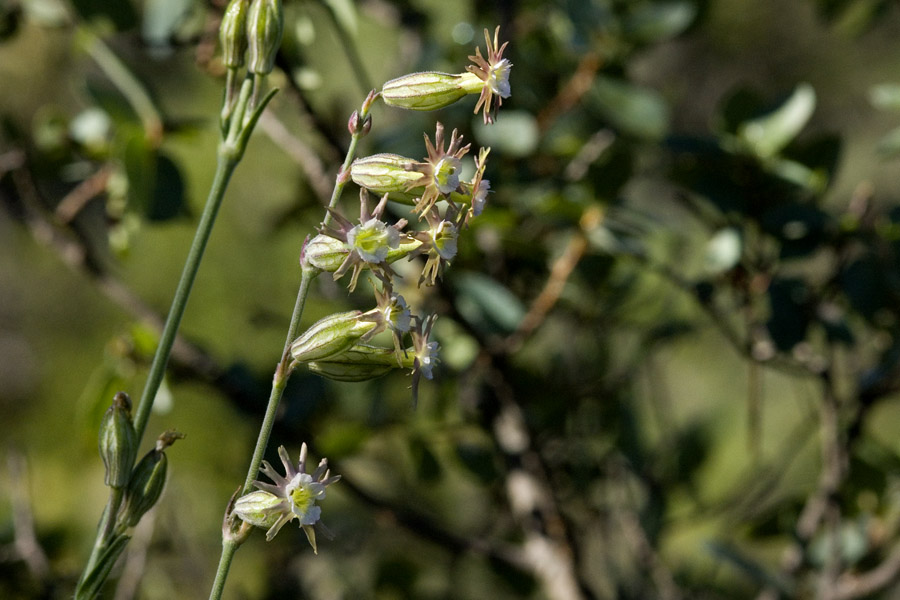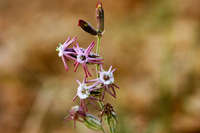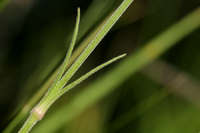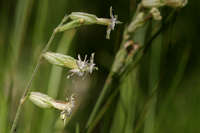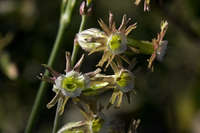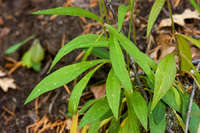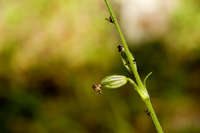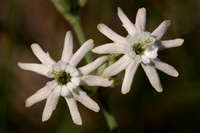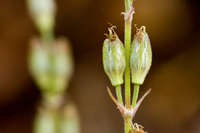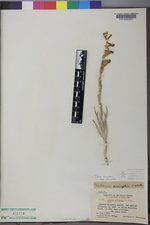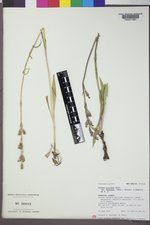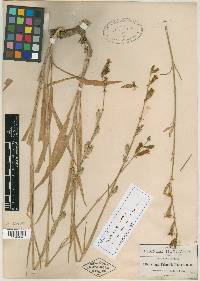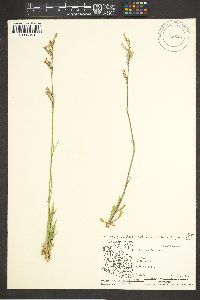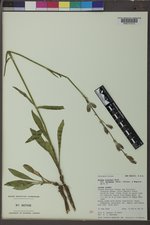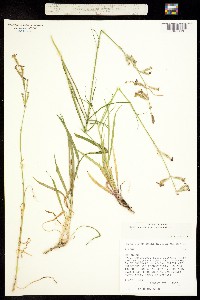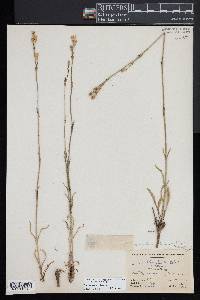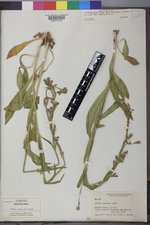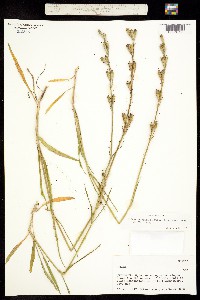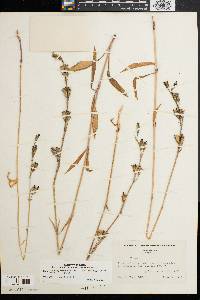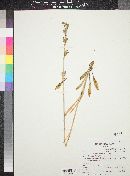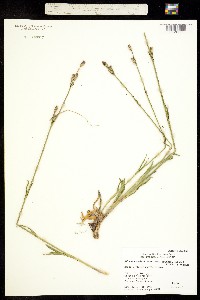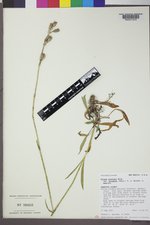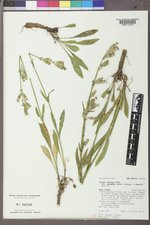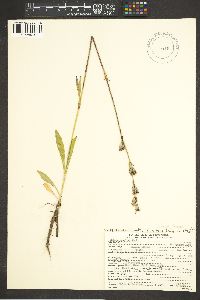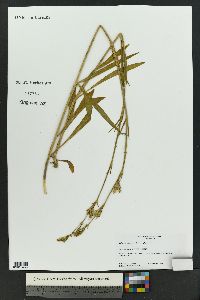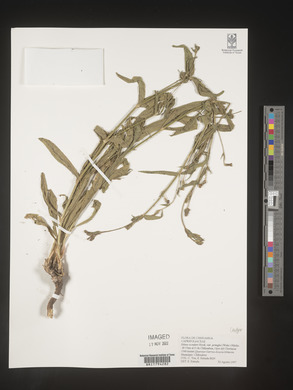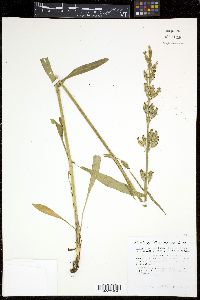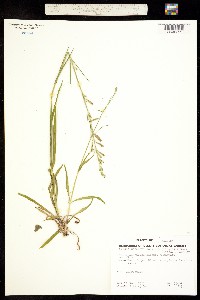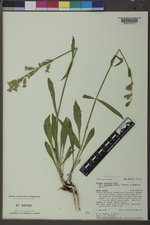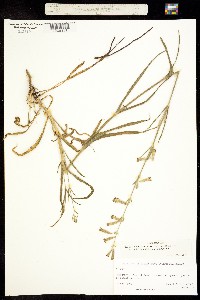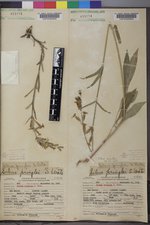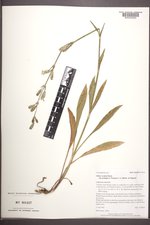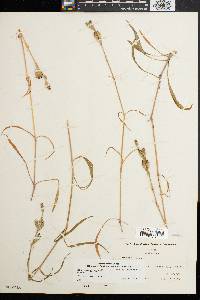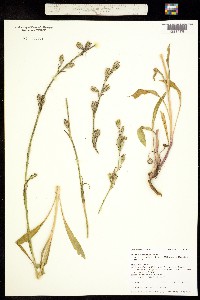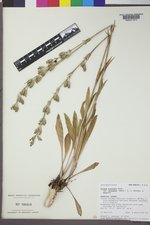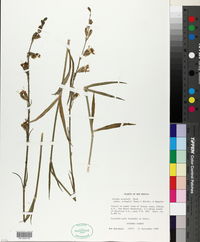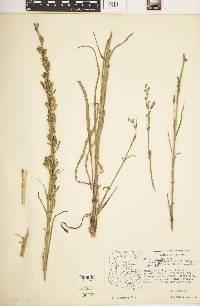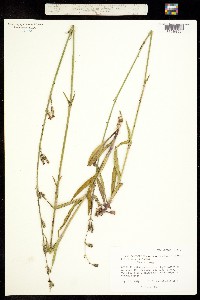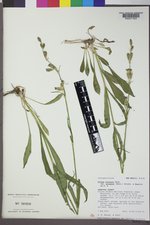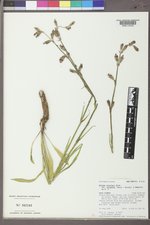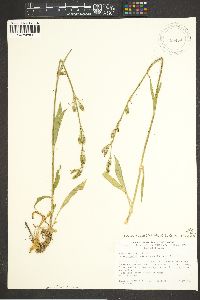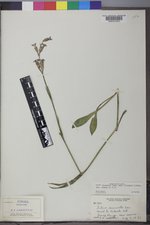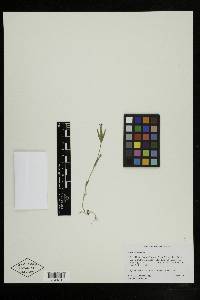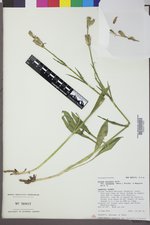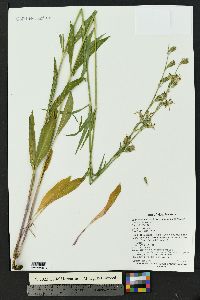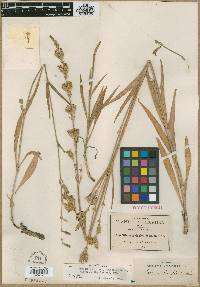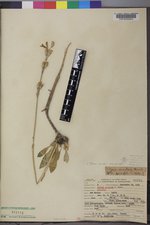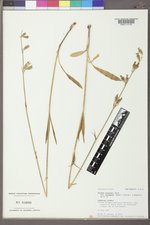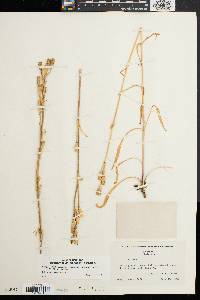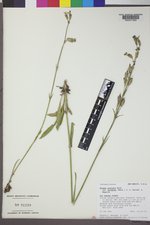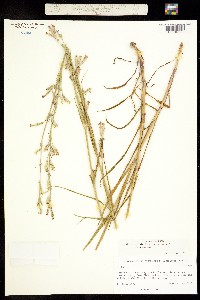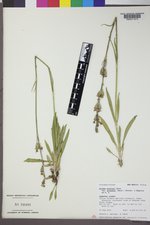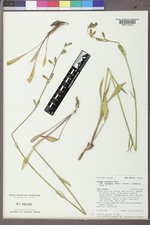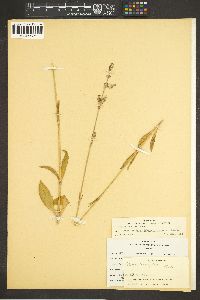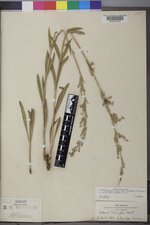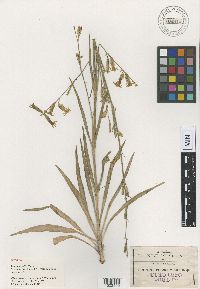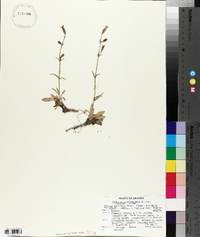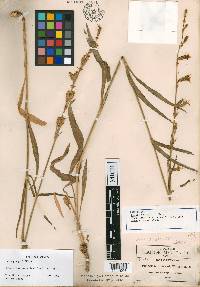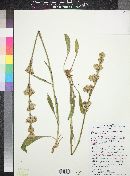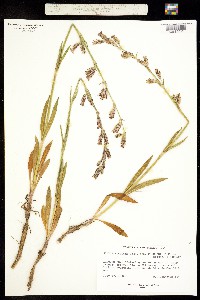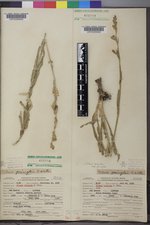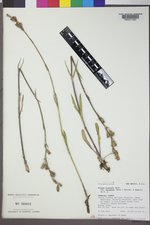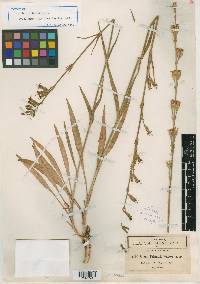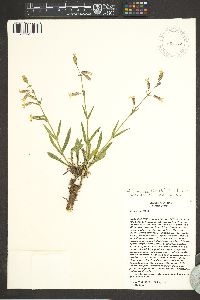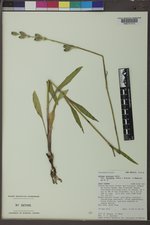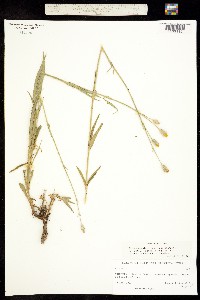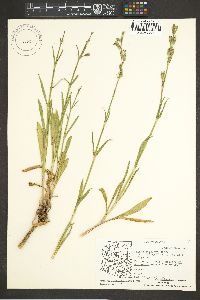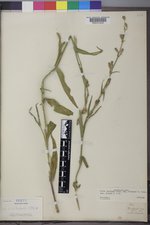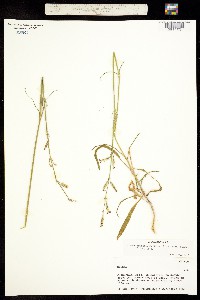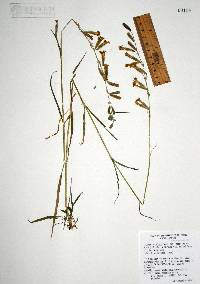
|
|
|
|
Family: Caryophyllaceae
simple campion, more...simple campion, simple campion, simple campion
[Silene pringlei S.Watson, moreSilene scouleri var. eglandulosa C.L. Hitchc. & Maguire, Silene scouleri var. grisea C. L. Hitchc. & Maguire, Silene scouleri var. leptophylla C.L. Hitchc. & Maguire, Silene scouleri var. pringlei (S. Wats.) C.L. Hitchc. & Maguire ex Kartesz & Gandhi] |
Stems slender, 20-70 cm, densely puberulent with deflexed, gray, short, eglandular hairs intermixed with stipitate-glandular hairs. Leaves: blade finely puberulent on both surfaces, often sparsely so; basal tufted, blade narrowly oblanceolate, 8-12(-25) cm × 4-20 mm (including petiole), base cuneate into petiole, apex acute; cauline in 3-8 pairs, ± connate basally, reduced distally, ± sessile, blade narrowly lanceolate, 2-10(-17) cm × 3-10 mm, ciliate at base. Inflorescences tending to be nodding with secund flowers, usually with 3-7 flowering nodes, slender, elongate, 4-30(-60) cm, retrorsely gray-puberulent, glandular or not, not strongly viscid, distal nodes often with cymes sessile and reduced to 2 pedicellate flowers, cymes of proximal nodes sometimes pedunculate on peduncles to 10 cm, with 2-5 pedicellate flowers; peduncle ascending; bracts leaflike, 4-20 mm. Pedicels ascending, frequently sharply deflexed at base of calyx, slender, ± equaling calyx. Flowers: calyx tubular to narrowly campanulate in flower, ± umbilicate, 11-14(-16) × 3-5(-6) mm, becoming turbinate or fusiform in fruit, puberulent, glandular with short-stipitate glands, veins almost always green, those of sinus slender, shorter than tube, those of lobes lanceolate, broadened distally, lobes 3-4 mm, margins membranous, apex obtuse with broad, membranous, ciliate tip; corolla white, often suffused with purple, sometimes greenish, clawed, claw lanceolate, broadened distally, ciliate, limb deeply 2-4-lobed, 5-8 mm, lobes narrow, usually with smaller lateral teeth, appendages 1-2.5 mm; stamens equaling claw; styles shortly exserted. Capsules ovoid-ellipsoid, slightly longer than calyx; carpophore 2-5 mm. Seeds brown, ± reniform, ca. 1 mm; papillae inflated, large. 2n = 60. Flowering late summer. Subalpine meadows, open woodlands and scrub, rocky hillsides and canyons; 2000-3300 m; Ariz., N.Mex., Utah; Mexico. Most of the collections of subsp. pringlei from Arizona tend to have larger calyces that suggest an affinity with Colorado material of subsp. hallii. Although subsp. pringlei is primarily a plant of high elevations in the arid regions of the southwest, its influence appears to extend as far north along the Rocky Mountains as the Canada-United States border, with many plants there showing some of the characteristics of this taxon.
FNA 2005 Duration: Perennial Nativity: Native Lifeform: Forb/Herb General: Stems densely puberulent, hairs glandular or not, 20-70 cm. Leaves: Opposite and clasping, narrowly oblanceolate with tufted bases, puberulent otherwise, 8-12+ cm long, connate basally and reduced as one moves up the stem. Fruits: Ovoid to ellipsoid capsules, with small, brown seeds. Ecology: Found in subalpine meadows, woodlands, scrub, rocky slopes, and canyons, from 6,500-11,000 ft (1981-3353 m); flowers late summer. Ethnobotany: There is no specific use recorded for the subspecies, however, the species was used in infusion form to treat stomachache pains and as an emetic, and also was used as horse medicine. Synonyms: Silene pringlei, Silene scouleri var. eglandulosa, Silene scouleri var. grisea, Silene scouleri var. leptophylla Editor: LCrumbacher, 2011 Etymology: Silene is probably from the Greek sialon, "saliva," referring to the gummy exudation on the stems, scouleri is named after Dr. John Scouler (1804-1871), a surgeon-naturalist who travelled, explored and collected the Columbia River region of the American Northwest, pringlei is named after Cyrus Guernsey Pringle (1838-1911). |
|
|
|
This project was made possible in part by the Institute of Museum and Library Services [MG-70-19-0057-19].
Powered by Symbiota

